
In the swiftly advancing realm of technology, the imperative for cutting-edge computing capabilities has reached unprecedented heights. As graphics processing units (GPUs Smart Cooling Strategies) ascend in potency, the concomitant escalation in demand for adept cooling methodologies becomes more pronounced. This composition delves into the revolutionary domain of intelligent cooling, with a particular emphasis on the efficacy of adaptive GPU fans.
Table of Contents
Introduction
Decoding GPU Fans: Graphics Processing Units (GPUs Smart Cooling Strategies) function as the driving force behind captivating visuals and streamlined data processing in contemporary electronic devices. The integral role played by GPU fans involves the pivotal task of preserving optimal operational temperatures by dispersing the heat generated during strenuous computational endeavors.
Significance of Temperature Regulation in Electronics
Vital Cooling Dynamics: Efficient temperature regulation is pivotal in thwarting overheating, a menace that can result in performance degradation or even irreversible harm to electronic components. In this context, GPU fans emerge as (GPUs Smart Cooling Strategies) critical guardians, ensuring the sustained longevity and dependability of GPUs.
Temperature guideline in hardware holds vital importance because of its immediate effect on the presentation, dependability, and life expectancy of electronic parts. There are numerous reasons why temperature control is essential:
Does gpu fan always spin? | 2024
Execution Advancement:
- Components That Respond to Temperature: Electronic parts, particularly semiconductors, work ideally inside unambiguous temperature ranges. Higher temperatures can prompt expanded opposition and diminished conductivity, influencing the exhibition of these parts.
Avoidance of Warm Choking:
- Keeping up with Predictable Execution: Warm choking happens when electronic gadgets lessen their presentation to forestall overheating. By preventing thermal throttling, effective temperature regulation ensures consistent and effective operation.
Life span and Unwavering quality:
- Wear and tear reduction: Over the top intensity speeds up the mileage of electronic parts, possibly prompting more limited life expectancies and expanded disappointment rates. Legitimate temperature guideline expands the life span and unwavering quality of electronic gadgets.
Avoidance of Part Harm:
- Temperature-Incited Pressure: Electronic components can experience thermal stress as a result of rapid temperature changes or prolonged high temperatures. This pressure can prompt actual harm, for example, microcracks in bind joints, compromising the respectability of the gadget.
Minimization of Intensity Related Disappointments:
- Heat-Initiated Disappointment Rates: Higher temperatures can improve the probability of electronic disappointments, including the breakdown of protection materials, debasement of capacitors, and other intensity touchy parts. Effective temperature guideline limits the gamble of intensity related disappointments.
Consistency in Electrical Qualities:
- Stable Electrical Properties: The electrical properties of components can be affected by variations in temperature. Keeping a steady temperature guarantees reliable electrical properties, basic for the precise activity of electronic circuits.
Avoidance of Warm Out of control:
- Uncontrolled Intensity Age: A few electronic parts, like semiconductors, can enter a condition of warm out of control whenever presented to exorbitant intensity. This peculiarity brings about a wild expansion in temperature and can prompt long-lasting harm.
Energy Effectiveness:
- Decreased Energy Utilization: Proficient temperature guideline adds to energy effectiveness. Electronic gadgets that work inside ideal temperature ranges require less ability to keep up with execution, diminishing in general energy utilization.
Further developed Execution in Outrageous Circumstances:
- Functional Respectability: Electronic gadgets intended for outrageous circumstances, like aviation or auto applications, depend on exact temperature control to guarantee functional trustworthiness in testing conditions.
Environmental Factors to Consider:
- Conformity to Law: Numerous electronic gadgets should agree with natural guidelines, including temperature limitations. Appropriate temperature the executives guarantees adherence to these principles, particularly in delicate applications.
Server farm Productivity:
- Server Homestead Activities: To keep server farms from getting too hot in data centers, temperature control is very important. Effective cooling frameworks assist with keeping a steady climate for ideal server execution.
Wellbeing Contemplations:
- Aversion of Fire Risks: Overheating can cause fires in extreme cases. To avoid such dangers to people’s safety, it is essential to regulate the temperature effectively.
- In outline, temperature guideline in gadgets is basic for keeping up with ideal execution, dependability, and wellbeing. From shopper gadgets to basic foundation, successful warm administration is a critical thought in the plan, activity, and upkeep of electronic frameworks.
GPU Fan Rotation, Save Energy | The Truth About 2024
The Evolution of GPU Cooling Mechanisms
Traditional Cooling Approaches: In bygone eras, GPU cooling strategies leaned heavily on conventional methods like heatsinks and constant-speed fans. Despite their effectiveness, these approaches lacked adaptability to fluctuating workloads, yielding suboptimal performance.
The development of GPU (Illustrations Handling Unit) cooling systems has been a unique excursion driven by the rising interest for better execution and productivity in designs concentrated applications, like gaming, computerized reasoning, and logical processing. Throughout the long term, a few cooling arrangements have arisen to address the developing warm difficulties related with all the more remarkable GPUs.
Cooling passively:
- In the beginning of GPUs, latent cooling was generally utilized. Without the need for additional fans, this approach relied on heat sinks to dissipate heat. While compelling for less requesting designs undertakings, it demonstrated lacking as GPUs turned out to be all the more impressive.
Single Fan Active Cooling:
- The presentation of dynamic cooling denoted a huge shift. A solitary fan connected to a heatsink turned into a standard arrangement. By blowing air directly onto the heatsink, this fan helps to dissipate heat more effectively than passive cooling.
Double Fan Designs:
- As GPUs kept on expanding in power and size, producers started carrying out double fan arrangements. This plan gave better intensity dissemination and considered more productive cooling, particularly in bigger designs cards.
Technology for advanced heat pipes:
- Heat pipes, which are loaded up with a coolant that disintegrates and consolidates to move heat, turned into a typical expansion to GPU cooling arrangements. These lines worked on the productivity of intensity move from the GPU to the heatsink, adding to better in general cooling.
Fume Chamber Cooling:
- Fume chamber innovation further upgraded cooling effectiveness. A sealed chamber containing a small amount of coolant has better thermal conductivity than traditional heat pipes because it vaporizes and spreads evenly.
Cross breed Cooling Arrangements:
- Some very good quality GPUs embraced crossover cooling arrangements, joining conventional air cooling with fluid cooling. Fluid cooling frameworks utilize a shut circle with a siphon and radiator, giving extra cooling ability to overclocking and requesting applications.
Custom Cooling Arrangements:
- Third-party manufacturers’ custom cooling solutions became increasingly popular. These arrangements frequently include bigger heatsinks, various fans, and in some cases exceptional plans to enhance cooling execution for explicit GPU models.
Solutions for Integrated Cooling:
- The GPU manufacturer has designed integrated cooling solutions that are now included with some GPUs. These arrangements are much of the time tailor-made for the particular warm qualities of the GPU, giving ideal execution and lessening dependence on outsider cooling arrangements.
High level Materials:
- The utilization of cutting edge materials, for example, graphene and high level polymers, plays likewise had an impact in working on the warm conductivity and intensity dissemination capacities of GPU cooling frameworks.
Innovative Cooling Techniques:
- Present day GPUs frequently highlight shrewd cooling innovations that progressively change fan paces and cooling execution in view of ongoing temperature observing. This assists balance the requirement for viable cooling with the longing for calmer activity when the GPU is under less burden.
All in all, the development of GPU cooling components has been an account of persistent advancement driven by the need to oversee expanding warm difficulties as GPUs become all the more remarkable. From uninvolved cooling to cutting edge, coordinated arrangements, the journey for proficient and powerful cooling stays a basic part of GPU plan and improvement.
Are GPU Fans Always On? | Ultimate Guide! 2024
Smart Cooling Strategies

Embarking on Adaptive GPU Fans: Adaptive GPU fans signify a paradigmatic shift in cooling technology. These sophisticated fans dynamically modulate their speed in response to varying workloads, delivering efficient cooling when necessary and conserving energy during less demanding tasks.
Operational Mechanics of Adaptive GPU Fans
Intricacies of Adaptive Cooling: The functionality of adaptive GPU fans is grounded in advanced sensors that diligently monitor real-time temperature levels. As workloads intensify, these fans autonomously elevate their (GPUs Smart Cooling Strategies) speed to dissipate heat effectively. Conversely, during less demanding tasks, the fans decelerate to conserve power.
Versatile GPU fans are an essential part of present day illustrations cards, intended to improve cooling execution while limiting commotion. The functional mechanics of these fans include modern calculations and sensors to powerfully change fan speed in view of different elements. Here is a breakdown of the key components:
Temperature Sensors:
- Temperature of GPU: The essential contribution for fan control is the GPU temperature. The temperature of the graphics processing unit (GPU) is constantly monitored by sensors on it.
- Temperature at VRM: Voltage Controller Modules (VRMs) control the power provided to the GPU. Checking VRM temperature is fundamental for generally framework dependability.
Fan Speed Control:
- PWM (Heartbeat Width Tweak): PWM signals are used to regulate the fans. The width of the beats decides the fan speed. A more extensive heartbeat relates to a higher speed, as well as the other way around.
- Fan Bends: Producers characterize fan bends that map temperature to fan speed. For instance, at lower temperatures, the fan could run gradually or be totally off, slowly increase as the temperature increments.
ASIC (Application-Explicit Incorporated Circuit):
Some GPUs have specific ASICs for fan control. Offloading this task from the GPU, these dedicated chips process temperature data and execute fan control algorithms.
Versatile Calculations:
- Control based on proportional integral derivatives (PID): This normal control calculation changes fan speed in view of the distinction between the objective and genuine temperatures. It thinks about the ongoing mistake, the vital of past blunders, and the pace of progress of mistakes.
- AI: In further developed frameworks, AI calculations might be utilized. Based on patterns and predictions, these algorithms adjust fan speed based on previous data.
Adaptation for the User:
Fan Profiles: Clients frequently have the choice to modify fan profiles through programming. They can select from predefined profiles like silent, performance, or balanced, or they can create their own by specifying the relationship between fan speed and temperature.
Modus Zero RPM:
Technology for a Fan Stop: Some GPUs incorporate a “Zero RPM” mode where the fans stay off during low-temperature situations. When the temperature rises above a predetermined threshold, the fans begin to spin.
Checking and Revealing:
- Programming Points of interaction: Clients can screen GPU temperature and fan speed through different programming points of interaction given by the GPU producer or outsider apparatuses.
- Driver Combination: GPU drivers assume a part in fan control, guaranteeing that the correspondence between the working framework and the GPU for fan speed changes is consistent.
Wellbeing Highlights:
- Safety from Overheating: Overheat protection mechanisms are included in adaptive fan systems to prevent damage. In the event that temperatures climb unnecessarily, the fans will work at greatest speed to quickly cool the GPU.
- In rundown, versatile GPU fans utilize a mix of temperature sensors, control calculations, and client customization to progressively change fan speed, enhancing cooling proficiency and limiting clamor in view of the continuous requests of the illustrations card.
Merits of Employing Adaptive GPU Fans
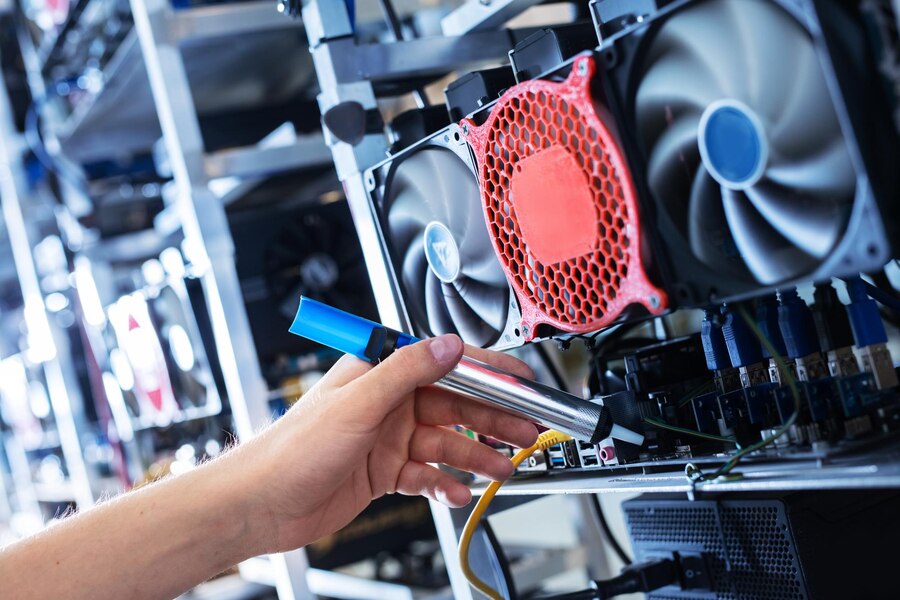
Smart Cooling Strategies
Elevated Energy Conservation: A standout advantage of adaptive GPU fans lies in their energy efficiency. By functioning at optimum speeds, these fans contribute to diminished power consumption, rendering them ecologically responsible and economically prudent for users.
Augmented Performance: Adaptive GPU fans ascertain that GPUs consistently operate within the optimal temperature range, mitigating thermal throttling. This translates to sustained high performance, particularly during resource-intensive activities such as gaming or video rendering.
How to Increase GPU Fan Speed | Ultimate Guide! 2024
Prolonged Longevity of GPUs: Effective cooling directly corresponds to the lifespan of electronic components. Adaptive GPU fans play an instrumental role in elongating the life of GPUs by forestalling undue wear and tear induced by excessive heat.
Versatile GPU fans offer a few benefits when utilized in illustrations cards, adding to further developed execution, client experience, and in general framework effectiveness. Here are a
portion of the key benefits:
- Dynamic Temperature Guideline: Versatile GPU fans change their speed in view of the temperature of the designs card. When the GPU is under heavy load, this dynamic regulation ensures that the fans operate at an optimal speed, reducing fan speed (and noise) during periods of lower activity. This outcomes in a harmony between productive cooling and a calmer framework.
Energy Effectiveness:
- By adjusting fan paces to the real warm necessities of the GPU, versatile fans add to energy proficiency. The GPU can run at lower temperatures, allowing the fans to run at a slower speed or even completely stop, which reduces power consumption and improves system energy efficiency.
More tranquil operation:
- Versatile fans succeed in giving a calmer client experience. The fans can operate at lower speeds or stop altogether to reduce noise levels when the GPU is not under a lot of load. This is especially invaluable for clients who focus on a calmer processing climate, like substance makers, experts, or gamers who esteem a quiet gaming experience during less requesting errands.
A longer lifespan for fans:
- Continually running fans at high velocities can add to mileage over the long run. Versatile GPU fans assist with expanding the life expectancy of the fan by decreasing the recurrence and force of fast activity. The GPU cooling solution might last longer as a result of this.
Further developed Client Solace:
- Versatile fan innovation upgrades client solace by keeping a harmony between successful cooling and calm activity. This is particularly significant for clients who burn through expanded periods working or gaming on their frameworks, as a calmer climate adds to a more pleasant and less diverting experience.
Enhanced Performance:
- By powerfully changing fan speeds in view of continuous temperature information, versatile GPU fans add to execution advancement. Successful cooling guarantees that the GPU can keep up with its presentation levels without warm choking, permitting clients to get the greatest exhibition from their illustrations card during requesting errands.
Customization and Control:
- Software interfaces that let users customize fan profiles and control the cooling solution’s behavior are included in many adaptive fan systems. Users can adjust the GPU cooling to their preferences at this level, balancing performance and noise levels to meet their requirements.
Stability at temperatures:
- Versatile fans add to keeping a steady temperature for the GPU. By changing fan speeds because of changing warm circumstances, these fans assist with forestalling overheating and guarantee that the GPU works inside its predetermined temperature range, adding to framework strength and life span.
Dynamic temperature regulation, energy efficiency, quieter operation, a longer fan lifespan, improved user comfort, performance optimization, and customization options are all advantages of using adaptive GPU fans. These advantages make versatile fan innovation an important part in present day designs cards, improving both the exhibition and client experience of GPU-escalated applications.
Implementation and Compatibility Considerations
Harmony Across GPU Models: Manufacturers are progressively integrating adaptive GPU fans into a plethora of GPU models. This facilitates users in enjoying the benefits of intelligent cooling across various brands and configurations.
Smart Cooling Strategies
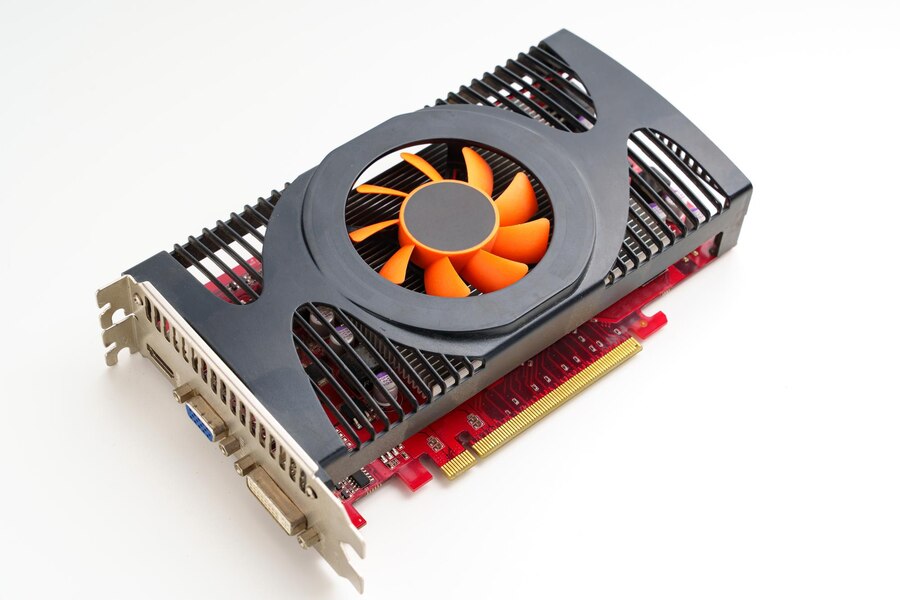
Smart Cooling Strategies
Installation Protocols for Adaptive GPU Fans: For users contemplating the upgrade of their existing GPUs with adaptive fans, the installation process is streamlined. Most manufacturers furnish comprehensive instructions, and numerous models support plug-and-play functionality.
Tailoring Options for Users: Adaptive GPU fans often come equipped with software enabling users to tailor fan profiles. This level of control empowers enthusiasts to fine-tune cooling strategies in alignment with their specific preferences and requirements.
GPU Fans Might Not Need to Spin Constantly | 2024
Real-world Deployment Scenarios
Gaming Realms: Enthusiasts, especially gamers, stand to accrue substantial benefits from the integration of adaptive GPU fans. The dynamic demands of gaming workloads render these fans invaluable for sustaining optimal temperatures during intense gaming sessions.
Professional Workstations: In professional milieus where GPUs are harnessed for endeavors such as video editing and 3D rendering, adaptive GPU fans ensure unwavering performance without necessitating manual adjustments.
Mining Setups: Cryptocurrency miners also reap rewards from the adaptive nature of these fans. As mining workloads fluctuate, adaptive GPU fans adeptly manage heat dissipation, contributing to stable and reliable mining operations.
Smart Cooling Strategies

Tackling Challenges Head-on
Addressing Complexity in Cooling Strategies: A hurdle in GPU cooling lies in the diversity of workloads, ranging from casual browsing to (GPUs Smart Cooling Strategies) resource-intensive gaming or professional tasks. Adaptive GPU fans adeptly tackle this complexity by dynamically adapting to the specific demands of each workload.
Managing Pulsations for Optimal Operation: Burstiness, characterized by abrupt spikes in computational demand, poses a challenge for conventional cooling solutions. Adaptive GPU fans excel in handling burstiness, swiftly escalating to dissipate heat during sudden spikes and subsequently reverting to lower speeds during periods of reduced demand.
Endorsements from Users
Positive Encounters with Adaptive GPU Fans: Users globally have shared affirmative encounters with adaptive GPU fans. The unanimous sentiment is that these fans deliver on their commitment to efficient cooling without compromising on performance.
Tangible Performance Enhancements: Testimonials underscore real-life scenarios where adaptive GPU fans have discernibly made a difference, be it in achieving higher frame rates in gaming or expediting rendering times in professional applications.
Optimization Tips for Adaptive GPU Fans
Regular Upkeep: To ensure sustained optimal performance, users are urged to conduct regular maintenance checks, including (GPUs Smart Cooling Strategies) the removal of dust accumulation on the fans and ensuring unimpeded airflow within the system.
Smart Cooling Strategies

Firmware Enhancements: Manufacturers periodically release firmware updates to enhance the functionality of adaptive GPU fans. Users are advised to stay abreast of these updates and promptly install them for the latest features and optimizations.
Monitoring Temperature Metrics: Leveraging software tools to monitor GPU temperatures furnishes valuable insights into the (GPUs Smart Cooling Strategies) efficacy of adaptive GPU fans. Users can adjust settings based on real-time data to further refine cooling optimization.
Future Trajectories in GPU Cooling
Ongoing Innovations: The panorama of GPU cooling is in a perpetual state of evolution, with ongoing innovations aimed at augmenting efficiency and performance. Vigilance regarding upcoming technologies and advances in the field is warranted.
Confluence with Artificial Intelligence: The integration of artificial intelligence into GPU cooling systems stands out as an intriguing trend on the horizon. AI algorithms may soon assume a more active role in dynamically optimizing fan speeds based on sophisticated predictive models.
Conclusion
Recapitulation of Advantages: In summation, the embrace of adaptive GPU fans marks a monumental stride forward in intelligent cooling strategies. The manifold benefits, encompassing heightened energy efficiency, augmented performance, and prolonged GPU lifespan, render them an enticing choice for both gaming enthusiasts and professionals.
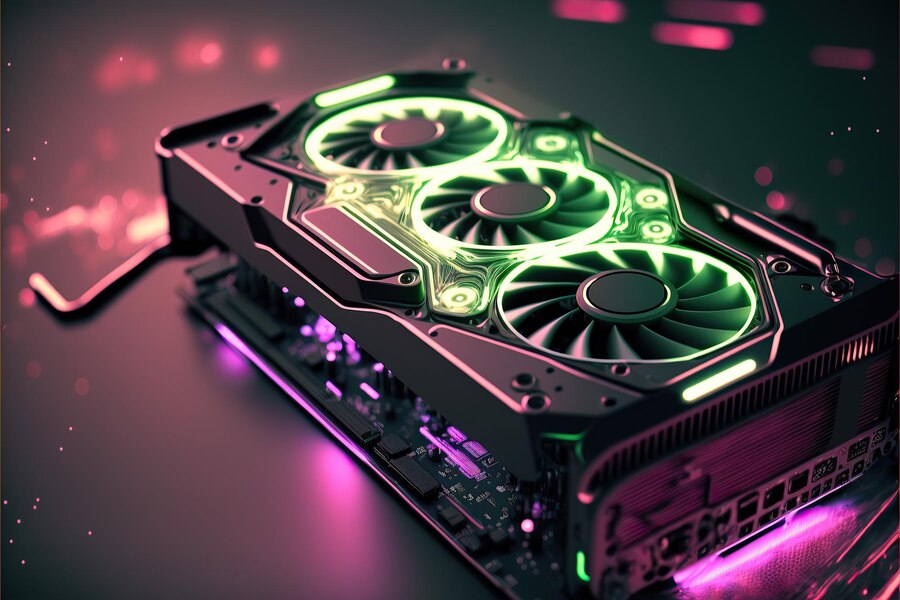
Advocacy for Adoption: For aficionados of technology, embracing innovations like adaptive GPU fans not only enhances individual computing experiences but also contributes to the broader evolution of electronics. Contemplate the transition to adaptive cooling and unlock the full potential inherent in your GPU.
FAQs
Manual Control of Adaptive GPU Fan Speed?
Indeed, many adaptive GPU fans are accompanied by software that affords users the capability to customize fan profiles and manually regulate fan speed. This degree of control proves especially advantageous for enthusiasts seeking to meticulously fine-tune their cooling strategy.
Power Consumption during High-demand Tasks?
While adaptive GPU fans may incur an uptick in power consumption during high-demand tasks, their design emphasizes efficient operation, contributing to overall energy savings. The heightened power usage is typically outweighed by the improved cooling efficiency.
Frequency of Cleaning Adaptive GPU Fans?
Routine maintenance assumes paramount importance in ensuring optimal performance. Cleaning adaptive GPU fans every 3-6 months, contingent upon environmental conditions, helps avert dust accumulation and sustains effective heat dissipation.
Noise Emission from Adaptive GPU Fans?
The noise levels emanating from adaptive GPU fans vary between models and manufacturers. Nevertheless, many contemporary designs prioritize quiet operation, especially during low-demand tasks. Referencing user reviews and specifications provides insights into noise levels.
- Does gpu fan always spin? | 2024 - December 27, 2023
- GPU Fan Rotation, Save Energy | The Truth About 2024 - December 25, 2023
- How to Increase GPU Fan Speed | Ultimate Guide! 2024 - December 19, 2023



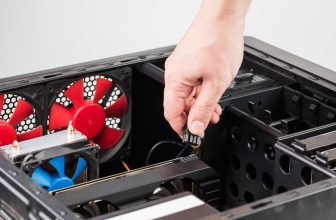
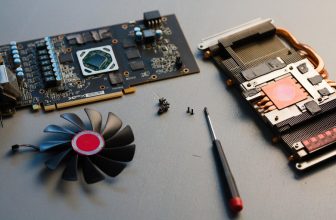
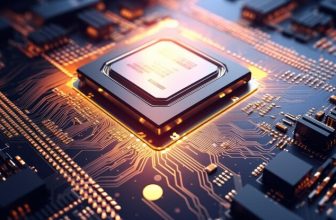
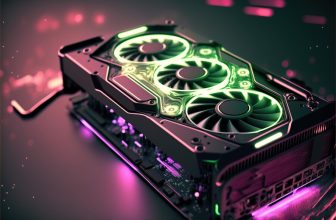

[…] transcend mere adornments; they represent integral components meticulously designed to maintain the GPU at an optimal temperature. Their primary duty involves dissipating heat generated during […]
[…] fan speed, an arcane metric, delineates the rotational velocity of the cooling fan affixed to your graphics card. Its primary function is the dissipation of heat generated during GPU […]
[…] that the GPU is experiencing a significant load and that the fan is spinning at a faster rate to effectively cool it. This is average during requesting gaming meetings or GPU-concentrated […]
[…] can gather on GPU fans over the long run, hampering their effectiveness. Cleaning regularly is necessary to avoid […]
[…] Smart Cooling Strategies: Unleashing the Power of Adaptive GPU Fans […]
[…] to wear and tear, continuous “GPU Fan Blades” fan operation may shorten the lifespan of electronic components, leading to an increased demand for new products and more frequent […]